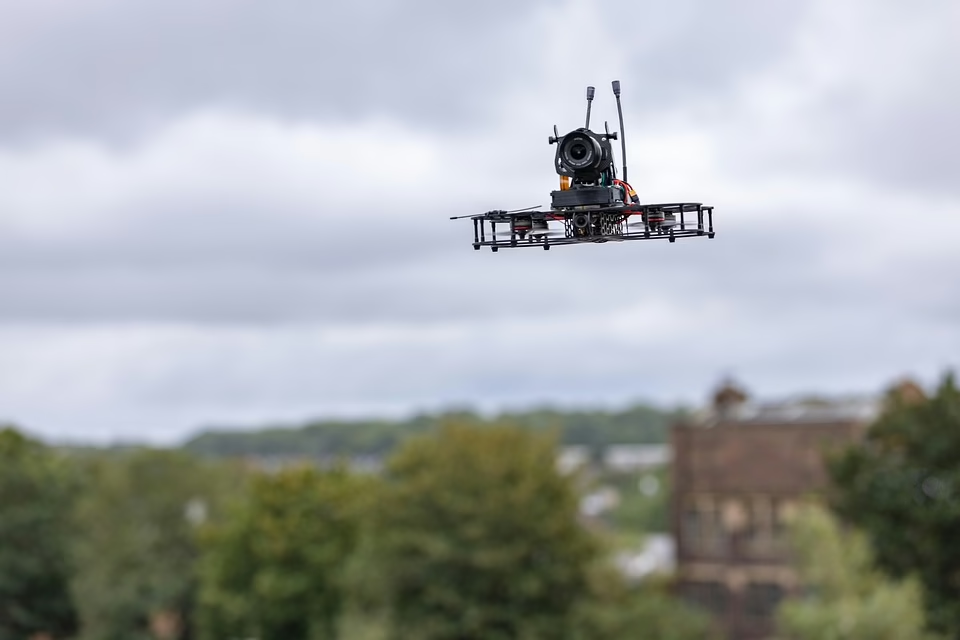Drones in Action: Revolutionizing Industries from Agriculture to Emergency Response
Drones, once the stuff of science fiction, have become commonplace tools that are revolutionizing various industries. From agriculture to emergency response, these versatile machines are reshaping how tasks are performed, making them more efficient, safer, and cost-effective. This article delves deep into the multifaceted applications of drones, the technology behind them, regulatory challenges, and future prospects across diverse fields.
A Brief History of Drones
Early Developments
The concept of unmanned aerial vehicles (UAVs) dates back over a century. During World War I, the U.S. military experimented with early forms of drones for training pilots and conducting surveillance missions. However, it wasn’t until the late 20th century that significant advancements in technology enabled more sophisticated drone capabilities.
The Rise of Commercial Drones
The commercialization of drones began around the early 2000s, primarily for military uses. However, rapid technological advancements, particularly in battery life, camera fidelity, and GPS capabilities, spurred a boom in commercial applications. In recent years, the Federal Aviation Administration (FAA) has implemented regulations that facilitate the safe integration of drones into the national airspace, paving the way for broader commercial use.
Drones in Agriculture
Precision Agriculture
Modern agriculture is increasingly reliant on technological innovations, and drones play a pivotal role. Farmers are employing UAVs for precision agriculture, which utilizes data analysis to improve yield and reduce costs. Drones equipped with multispectral cameras can provide detailed images that reveal plant health, soil quality, and moisture levels, helping farmers make informed decisions about irrigation and fertilization.
-
Crop Monitoring: Drones can cover large areas quickly to collect data on crop conditions, identifying stressed areas that may require attention.
-
Soil Analysis: UAVs can assess soil quality and composition, enabling tailored treatment plans for specific regions of a farm.
-
Pesticide and Fertilizer Application: Drones can spray pesticides and fertilizers more uniformly than traditional methods, minimizing waste and environmental impact.
Case Studies
A notable example is the use of drones by the Brazilian agricultural company, Remote Sensing Solutions. They implemented drone technology to monitor sugarcane fields, resulting in a 20% increase in yield through timely interventions and efficient resource management. Similarly, DroneDeploy has made strides in providing software that enables farmers to analyze field data efficiently.
Drones in Construction
Site Surveys and Monitoring
In the construction industry, drones are revolutionizing how projects are planned and executed. Drones can perform aerial site surveys, yielding highly accurate topographic maps in a fraction of the time it takes using traditional methods.
-
Progress Monitoring: Drones can provide real-time photos and video of construction progress, making it easier to communicate updates with stakeholders and ensure that projects are on track.
-
Safety Inspections: Inspecting hard-to-reach areas is dangerous and time-consuming. Drones can safely assess roofs and structures without the need for scaffolding or climbing equipment.
Case Studies
Skanska, one of the largest construction companies in the world, has integrated drones into its workflow. They reported a 50% reduction in time spent on site surveys and inspections. This not only enhances efficiency but also improves safety and compliance with regulations.
Drones in Emergency Response
Search and Rescue Operations
Drones equipped with thermal imaging cameras are proving invaluable in search and rescue missions. They can quickly cover large areas, helping locate missing persons or assessing disaster-stricken areas.
-
Natural Disasters: After hurricanes, earthquakes, or floods, drones can assess damage, identify survivors needing assistance, and deliver critical supplies.
-
Firefighting: Drones are used to survey wildfires from above, providing real-time data that helps firefighters strategize containment efforts.
Case Studies
In 2017, after Hurricane Harvey devastated Houston, drone technology was employed to assess flood damage. The UAVs provided structural assessments that guided emergency responders and insurance adjusters. Similarly, the Swiss drone company Flyability has been instrumental in improving search and rescue operations, with their drones flying into challenging environments to provide situational awareness.
Drones in Delivery Services
Last-Mile Delivery
Drones are also poised to redefine the delivery landscape, particularly in last-mile delivery. Retail giant Amazon has been at the forefront of this shift, experimenting with UAVs to deliver packages to customers’ doorsteps.
-
Efficiency and Cost Reduction: Utilizing drones for delivery can significantly reduce transportation costs and delivery times, particularly in urban areas.
-
Environmental Impact: Drones are generally more environmentally friendly compared to traditional delivery vehicles, contributing to reduced carbon emissions.
Case Studies
In a notable pilot project, Wing, a subsidiary of Alphabet, successfully tested a drone delivery service in Australia, where they delivered everything from groceries to medical supplies within minutes. The service has gained traction and has plans for expansion based on positive customer feedback.
Drones in Environmental Monitoring
Wildlife Conservation
Drones have been used extensively in wildlife conservation efforts. Equipped with high-definition cameras and GPS technology, they aid researchers in tracking animal movements, surveying habitats, and monitoring poaching activities.
-
Data Collection: Drones can gather extensive data on wildlife populations, migration patterns, and the health of ecosystems.
-
Anti-Poaching Efforts: UAVs can patrol protected areas and alert rangers to poachers’ activities without disturbing wildlife.
Case Studies
Organizations such as the World Wildlife Fund (WWF) utilize drones to survey endangered species and monitor their habitats effectively. These aerial observations have led to more effective conservation strategies and increased funding for wildlife protection.
Challenges and Regulations
Regulatory Hurdles
Despite their immense potential, the widespread adoption of drones faces regulatory challenges. In the U.S., the FAA has established regulations governing drone usage, including restrictions on flight altitude, areas of operation, and pilot certification requirements.
Privacy Concerns
As drones become more ubiquitous, concerns about privacy and surveillance have intensified. Many citizens fear invasive monitoring and data collection, leading to calls for stricter regulations regarding civilian drone use.
Safety Issues
Airspace management is another concern. Drones must safely coexist with manned aircraft to prevent collisions, and the integration of Counter-UAV (C-UAV) technology is essential to address this challenge.
The Future of Drones
As technology continues to evolve, the drone industry is poised for transformative growth. Machine learning, artificial intelligence, and improved battery technologies are set to open new frontiers.
Automation and AI
AI can enhance drone capabilities by enabling real-time decision-making and autonomous operation. This could drastically reduce the need for human oversight, making drones even more efficient in various applications.
Integration with IoT
The integration of drones with the Internet of Things (IoT) can lead to advanced data collection and monitoring systems. For instance, farmers could use IoT sensors alongside drones for real-time soil analysis and crop health monitoring.
Urban Air Mobility
Urban air mobility is on the horizon, with companies developing passenger drones for short-distance travel. This innovation could alleviate urban congestion and transform how people commute.
Conclusion
Drones are more than just a technological fad; they represent a paradigm shift affecting industries as diverse as agriculture, construction, emergency response, and delivery services. As regulations adapt, and technology continues to advance, the possibilities for drones are virtually limitless. Embracing this change can lead to greater efficiency, safety, and environmental sustainability in the years to come. The future of drones is bright, and their potential applications are set to redefine the boundaries of innovation in various sectors.
References
- Source 1: Federal Aviation Administration (FAA)
- Source 2: Remote Sensing Solutions
- Source 3: DroneDeploy
- Source 4: Skanska
- Source 5: Flyability
- Source 6: Amazon Prime Air
- Source 7: Wing
- Source 8: World Wildlife Fund (WWF)
This overview highlights the transformative implications of drone technology across multiple sectors, showcasing its urgency and relevance in today’s fast-paced world.


























Add Comment